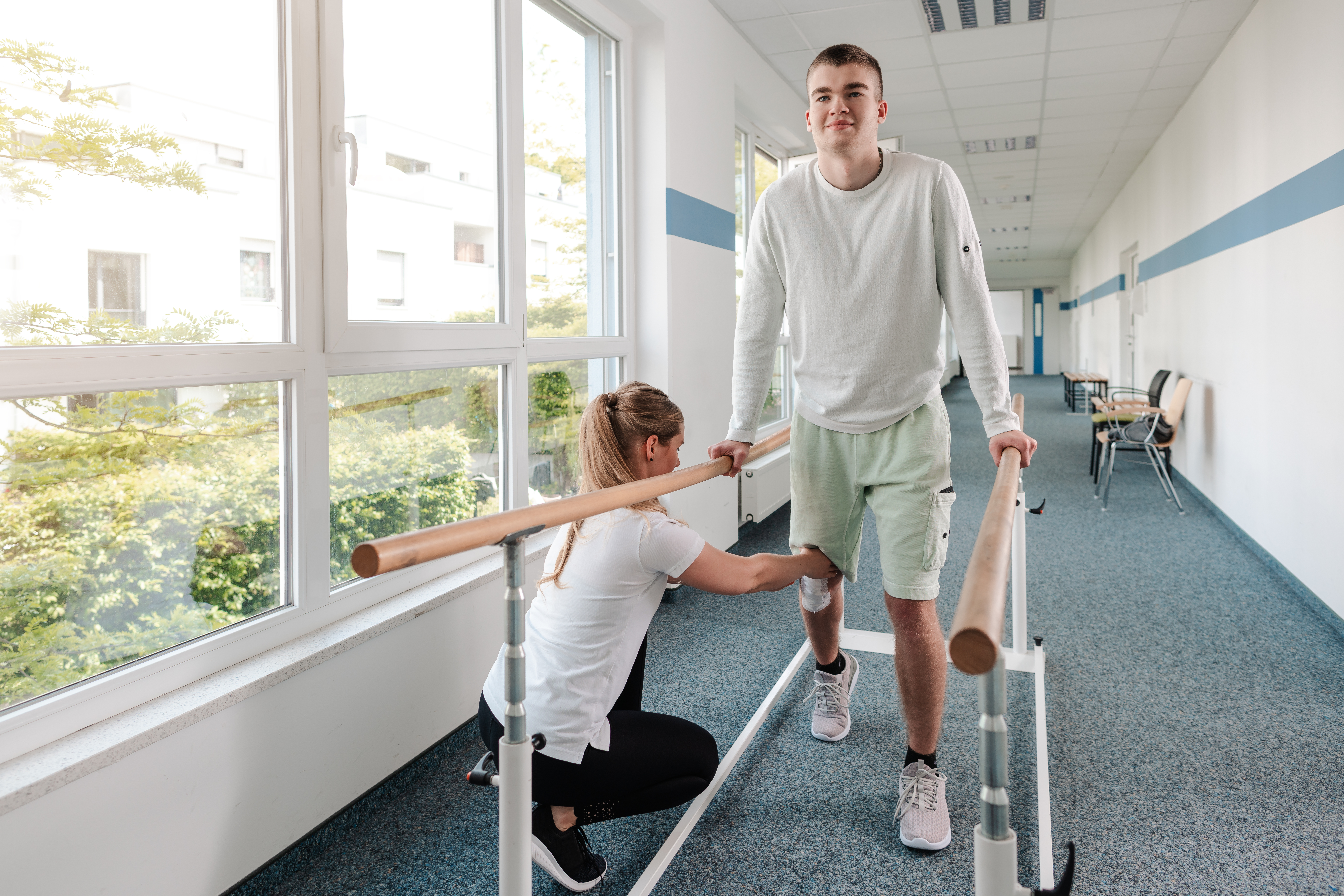
The purpose of this research project on the best instruction and feedback methods for teaching new movement tasks is to improve rehabilitation programmes for patients with MS-related cognitive disorders. This project also studies the manner in which complex lower-limb movements can be taught to people with cognitive and motor impairments. They learn movements in a specific order by receiving various types of instruction or feedback (e.g. sounds or music).
The degree of automaticity is then measured during double tasks in which the subjects walk and perform a cognitive task simultaneously. During movement with and without double-tasking, cerebral activity in the areas responsible for movement planning is measured with electrodes placed on the front of the skull. The results of this study may enable rehabilitation programmes for people affected by both motor and cognitive impairment to be improved.
Optimise rehabilitation programmes
Professor Feys explains: "Neurorehabilitation is the rehabilitation that specifically aims to improve cognitive, physical and also psychological function in patients with neurological diseases such as multiple sclerosis. The primary purpose of our research is to map and measure these functional issues.
For instance: physically, we observe the way people walk. We measure the speed of their steps and determine their manner of walking by placing sensors on the feet and body. It's essential to understand how people walk, as walking involves muscles, but also, of course, the brain and the signals it sends to the body. The Charcot Foundation has helped us undertake this mechanical research. We had expertise in measuring the performance of double tasks, but neither the expertise nor the equipment to also measure brain activity. The Charcot Fund has enabled us to purchase specific equipment for that type of measurement."
"When people think of physical training, they think in terms of muscle training with strength equipment, and also cardio training. But we're also looking at combined forms of training such as dancing. We've noticed that the fact of adding rhythm stimulates other cerebral networks and improves patient performance. We've developed a smartphone app that sends highly specific coaching programmes to multiple-sclerosis patients. For instance, the app users can say whether or not they're slowing down, why they're slowing down or if they're tired. We try to measure patient mobility in those terms, and also to coach them, to increase their physical activity."
A future in 3D
"In order to improve our understanding of movement in MS patients, we use special treadmills combined with virtual learning environments. These enable us to take very detailed and accurate measurements of knee, foot, hip, pelvis and torso movements and better understand the control exercised by the brain on those actions. At our movement lab, we also map all everyday actions, as in daily life people walk, encounter obstacles, people move around you, you have to be very attentive to your surroundings, and this device enables us to measure the abilities of MS patients in a single task. The patients wear a kind of balaclava fitted with electrodes. Our ultimate goal is to link movements to brain activity and achieve a full picture of movement in a subject."
Want to know more? You can watch the full video of this interview on www.fondation-charcot.org/en.
